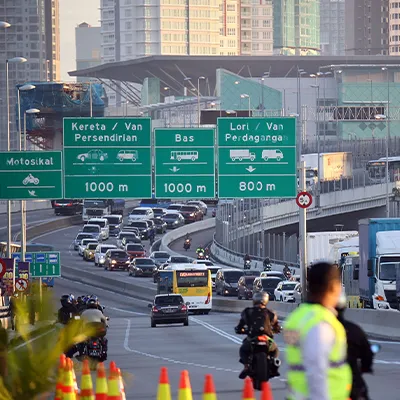This is part of “The Edges of Southeast Asia” project by Deloitte, the Singapore Economic Development Board and the US-ASEAN Business Council, which shines a light on the bright spots of creativity and innovation in the region. We take a look at emerging 'edges' or customer segments, geographic markets or products that offer high growth potential opportunities in ASEAN.
Before the Covid-19 pandemic, Dat was a long-serving employee of a large multinational corporation. He was proud of his job. He had worked hard to get where he was - a fact he often reminded his cousins, who did not study as hard as he did at school. They ended up in odd jobs and running their own small businesses.
Dat's cousins are typical of his compatriots. In the Asia-Pacific region, the informal economy accounts for nearly 60 per cent of non-farm employment.
Informal employment exists out of necessity. It is often a precarious way of making a living. Workers are less protected by regulation than traditional full-time employees. They do not have access to pension plans and they are more at risk of losing their jobs.
The traditional approach of Southeast Asian governments to help these more vulnerable workers has been to focus on creating more jobs within the government, state-owned enterprises and multinational corporations.
However, the pandemic has highlighted the vulnerability of the livelihoods of so many people, and we, as a region, need to take a fresh approach.
From jobs to income
Dat, for example, found himself unemployed and without an income, while his cousins were left relatively unscathed. Putting his ego aside, he called one of his cousins for advice. He sighed at the list of suggestions: deliver food, start a business selling masks, privately tutor students and the like. Yet, he knew he had to do something.
So Dat made his first foray into the gig economy: He became a Grab driver. This allowed him to make just enough money for his family's daily expenses. But he knew it was not a long-term solution. He had always been a keen baker so, with the encouragement of his wife, he also started a business selling his delicious muffins online.
Dat's story shows that one solution for a more resilient economy has always been in our midst - entrepreneurship. Over the past decade, technology has lowered the barriers to entry for many sectors while creating new avenues for entrepreneurs to flourish.
Moreover, entrepreneurs can spur even more entrepreneurship when they create platforms - such as Grab and Shopee - that can support and accelerate more entrepreneurial growth.
These trends show how the region's economy is changing and how people like Dat are relying more on technology platforms and entrepreneurship for their livelihoods and less on multinational and government organisations.
To support this shift, governments must focus less on the old paradigms of job creation and more on income generation by developing better regulatory structures and safety nets.
From employees to entrepreneurs
Being an entrepreneur may not offer the income stability that comes with employment in a large organisation. But as the world enters an era of constant disruption and whole industries are increasingly susceptible to large-scale change, traditionally stable jobs are no longer "iron rice bowls".
Technology platforms are creating new sources of work and income by connecting suppliers and customers more efficiently.
In Indonesia, an estimated two million to three million on-demand motorcycle drivers are earning income on Gojek. If this constituted formal employment, Gojek would be Indonesia's biggest employer - a stark illustration of the power and potential of these platforms.
New types of entrepreneurs and opportunities abound. At least half of retailers in Singapore, Thailand, Vietnam and the Philippines now use social media live-selling and "shoppertainment" to market their products - a trend accelerated by the pandemic.
This provides income streams for "influencers" who live-stream mini shows and product demonstrations for e-commerce companies.
There are many other platforms as well. Airbnb opens up opportunities to lease a home or room. Carousell allows people to list, sell and buy items. Viddsee helps local film-makers to better connect with target audiences and corporate partners in the otherwise noisy online space. And these are just the tip of the iceberg for aspiring entrepreneurs in Southeast Asia.
These platforms are also enhancing the resilience of traditional businesses. Live-selling on Facebook and having digital payment options have enabled entrepreneurs like Mr Anurak Saruethai, the son of a Thai fisherman, to make hundreds of thousands of dollars selling dried seafood products, and many robust delivery services have been a lifeline to many restaurants and retailers in South-east Asia during the pandemic.
Indeed, Singapore's digital economy earned an additional US$500 million (S$661 million) last year, with some businesses seeing up to three times their usual growth.
From skills to capabilities
When Dat started his muffin business, he was understandably anxious. He knew next to nothing about social media marketing or business strategy. The former did not even exist when he went to university.
Dat took a few online courses on running a business to give him the confidence to start, but the courses were mainly a placebo. He would later find that the greatest source of his business acumen was from watching how his mother sold her wares when he was young.
In a future full of entrepreneurial opportunities, education must move beyond just equipping people with skills aimed at certain professions. The next generation of workers needs to understand the value of enduring human capabilities such as initiative, creativity, imagination, curiosity, courage and grit. They need to be able to learn and adapt quickly.
The pandemic has highlighted many of these capabilities in action as businesses and individuals have had to reinvent themselves. These include an out-of-work Filipino special-effects artist selling horror masks and a Singaporean family making curry buns to survive job losses.
As Dat's experience shows, how people learn these capabilities is different from how skills are taught. While courseware can help, these capabilities are best learnt on the job. Our education system needs to give people opportunities to apply these capabilities in real life and to learn from mentors in the workforce.
Skills are still important, but the traditional approach of learning in blocks of months or years must change. Microlearning is the future, with modular, bite-size sessions that can take a few weeks or as little as five minutes. Global platforms, such as Coursera and Udemy, and regional platforms, like Singapore's MySkillsFuture and Thailand's SkillLane, are early examples of modular, on-demand learning systems.
From Abenomics to Aseanomics
It is still too early to say if Dat's business will be a success. Yet, by many measures, it already is. He turned a passion into a business and customers love his muffins. Now, Dat has plans to stop driving Grab and focus on the business full time. He dreams of expansion and, with it, a new life.
Similarly, we have good reason to be optimistic about Southeast Asia's future. Yet, we can no longer rely solely on traditional policymaking such as Abenomics - the economic policies championed by former Japanese prime minister Shinzo Abe focused on quantitative easing and fiscal stimulus to jump-start the economy. No doubt many governments will apply both these tools as the world emerges from the pandemic-led global recession.
However, a strategy designed for a stagnating economy may not be a suitable long-term policy for the members of Asean - fast-growing nations with enormous potential.
Enter Aseanomics: government policies that accelerate the growth of platform businesses, strengthen the structural safety nets for individuals and small enterprises building businesses on these platforms, and develop new models of equitable sharing of value. These policies should therefore include initiatives being considered by Singapore's National Trades Union Congress - providing self-employed delivery riders and creative content professionals with loss-of-income insurance and access to cash grants.
To be clear, multinational corporations, governments and established local businesses still have a big, and continuing, role to play in providing employment. But governments in the region can no longer ignore the fundamental changes in their economies and workforces.
Admittedly, Aseanomics is but a play on words and there is no structural way for countries in the region to coalesce on these policies. However, individual governments can apply principles of Aseanomics to drive resilient growth in their economies.
From crisis to prosperity
Dat is a fictional character. Yet, in a sense, he is also very real. He exists among us Southeast Asians as that friend or relative we all know - that person who has had to reinvent themselves during the pandemic. At the same time, he represents the potential future of our region.
The world is at a crossroads. Old, entrenched systems, from globalisation to capitalism, are showing cracks in their current form. Outdated regulations, processes and systems are impeding a technology-led economic recovery.
Southeast Asian nations have much in their favour. Our demographics and less deeply entrenched infrastructure can enable more rapid change than in other parts of the world.
As a region, we can use this crisis as a catalyst to set a new path - one that accelerates the adoption of technology and entrepreneurship, while shoring up structural safety nets and allowing the equitable redistribution of wealth.
Done right, we can put Southeast Asia on a path to prosperity for many, and for many decades to come.
Duleesha Kulasooriya is head of the Deloitte Centre for the Edge in Asia-Pacific.
This article was first published on The Straits Times, and is reproduced with the author's permission.







